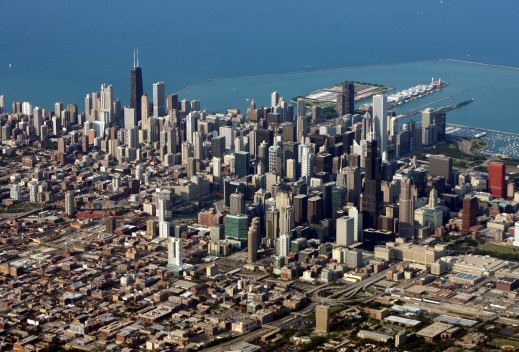Movie Review: The Interrupters
More on:

I want to highly recommend a new documentary film, “The Interrupters,” which provides a gripping account of conflict prevention and mediation as practiced on a personal level in inner-city Chicago. With 300 hours of film shot over fourteen months, the documentary follows the travails of three members of Project CeaseFire, a grassroots non-governmental organization that employs ex-gang members to attempt to mediate neighborhood disputes before they turn violent.
The film is a collaboration of Steve James, director and producer of the brilliant 1994 basketball documentary "Hoop Dreams," and Alex Kotlowitz, author of the May 2008 New York Times Magazine article, “Blocking the Transmission of Violence,” which served as the source material for the film.
In that article, Kotlowitz explores the ideas developed by Project CeaseFire’s founder, epidemiologist Gary Slutkin. After years of working to halt the spread of tuberculosis, cholera, and AIDS in San Francisco and throughout Africa, Slutkin discovered that street violence is a learned behavior that mimics the spread of infectious diseases. Just as trying to mitigate the outbreak of a disease after transmission does not work and is much more costly than prevention, Slotkin believes that more intensive policing and longer prison sentences were doing nothing to prevent the proliferation of homicides in U.S. cities.
With a preventive approach, the Violence Interrupters attempt to tackle a specific “disease”—namely the idea that it is acceptable to use violence to resolve grievances. They do this through patrolling Chicago’s streets to speak directly with gang members, drug dealers, and families of victims who are on the verge of attacking someone out of revenge, or in retaliation for a perceived showing of disrespect.
Their methods require that the interrupters listen and empathize with how gang members think, while also being confrontational when necessary to stop a likely imminent shooting. At one moment we see a violence interrupter laid up in a hospital bed after he was shot in the back in an unsuccessful effort to deescalate tensions at a crime scene. On a broader level, Project CeaseFire also tries to transform local norms about violence, through outreach to young children and leading protest marches in post-conflict communities.
Because of the intimate access that was provided to the filmmakers, some parts of “The Interrupters” are difficult to watch. Fascinatingly, as the violence is so common, it is also highly ritualized: there are wrenching scenes of funeral speeches, family fights that turn ugly, and innumerable makeshift memorials of stuffed animals, signed cards, and liquor bottles that sprout up at each murder site and then decay as the seasons change. In one small but memorable moment, we see a shrine on a brick wall at the Atgeld Gardens housing project that contains rows and rows of names of violence victims. The camera pans to one brick that simply reads: “I am next.” In another, a funeral director describes the alarming frequency with which he buries young people and how the survivors identify with and even pose with their friend lying in the coffins during ceremonies.
The movie doesn’t spend time on details, such as how much Dr. Slutkin’s approach costs versus other community-based programs, where Project CeaseFire get its funding (the State of Illinois and the Department of Justice), and, most importantly, is effectiveness. According to a 2008 Department of Justice evaluation of CeaseFire, in areas where the project was active there was a 41-73% drop in shootings and killings. Ultimately, however, “The Interrupters” is not about monitoring and evaluating a social program, but following people who care and hope to create a more peaceful community in ones where happy endings are few and far between. See “The Interrupters” this fall. You won’t have an experience over two hours and five minutes that persists as long in your mind and makes you think about the enduring problem of violence in America.
More on:
 Online Store
Online Store
